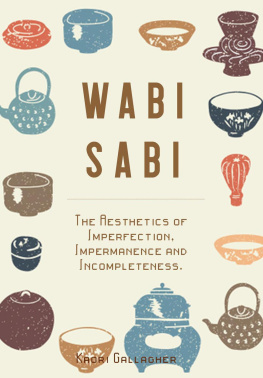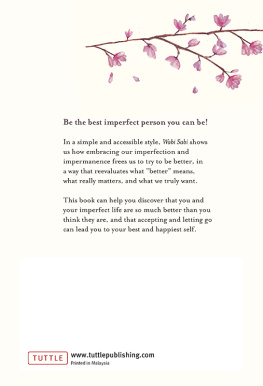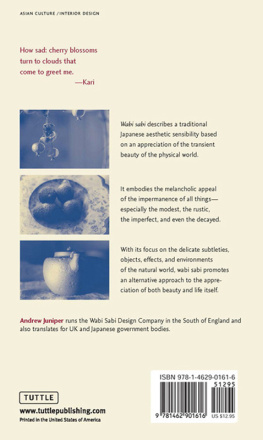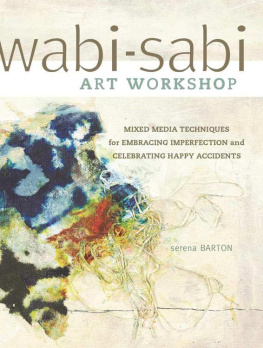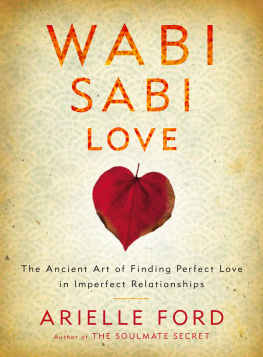All Rights Reserved. No part of this book may be reproduced in any manner without the express written consent of the publisher, except in the case of brief excerpts in critical reviews or articles. All inquiries should be addressed to Skyhorse Publishing, 307 West 36th Street, 11th Floor, New York, NY 10018.
Skyhorse Publishing books may be purchased in bulk at special discounts for sales promotion, corporate gifts, fund-raising, or educational purposes. Special editions can also be created to specifications. For details, contact the Special Sales Department, Skyhorse Publishing, 307 West 36th Street, 11th Floor, New York, NY 10018 or info@skyhorsepublishing.com.
Skyhorse and Skyhorse Publishing are registered trademarks of Skyhorse Publishing, Inc., a Delaware corporation.
Visit our website at www.skyhorsepublishing.com.
Library of Congress Cataloging-in-Publication Data is available on file.
Table of Contents
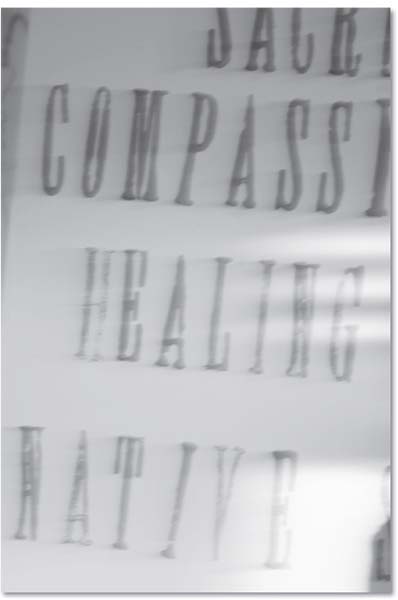

Foreword
When I was first asked to write a book about wabi sabi, my immediate thought was: How will I be able to put something so beautiful into words?
But just as soon as the thought hit me, I remembered that wabi sabi never demands anything of us; it is the most gentle teaching there is. I therefore wanted to make an attempt to present this deep wisdom that is just waiting to be discovered more thoroughly.
Wabi sabi is sometimes called the religion of beauty. Timeless wisdom and humble beauty are a few of the terms that circle this teaching. Wabi sabi gives us the wisdom to create a warm, beautiful, and rich life. A life where we do not resist, dont stress, and dont hunt after a diffuse happiness, which lies in front of so many of us as a mirage. Wabi sabi removes this illusion and gives us the insight that happiness is a fleeting feeling. If we let go of the hunt for it and instead search for gentle enjoyment in life, we will feel so much better.
Wabi sabi is seen as the heart of Japanese culture and has its roots in the Zen philosophy. The quiet Japanese Zen existence is a way of life that most of us will never even get close to today, even if we wanted to. I have therefore consciously chosen to use todays time and its possibilities and challenges as a basis in this book.
I will describe my journey in the topic and my trials in trying to change my existence and move towards a more modest and humble life. I do not always succeed, but when I meet challenges, I remind myself of wabi sabis basic idea: Nothing is perfect. With that insight, I can enjoy even my own failures and my lifes imperfections.
Wabi sabi has taught me to accept things as they are. I do not have to fight life at all timesI can rest, follow the flow, and let lifes own power and my longing steer me instead of fighting it. Wabi sabi has also taught me to accept change, since it is unavoidable in our existence. To live with wabi sabi means maturing as a human being and learning to see our existence with sober eyes. My hope is to be able to pass this wisdom on to others.
I would like to thank the people that have inspired meamong them are Richard R. Powell, Andrew Juniper, Candice ODenver, Joyce Rupp, Gary Thorp, Gregg Krech, and John Lane.

Wabi SabiThe naked beauty of life
Wherever we turn in this world, we find that humans have relied on principles that contain terms like performance, determination, dedication, and development. In many ways this seemed inevitable, and yet, it seems more important than ever to find ways to live in unison with nature and ourselves. If not, there is actually a risk that we will go under.
It is daunting to think that in 1900 and 1950 a similar development in our part of the world took place, a development that had previously taken 6,000 years. Between 1950 and 1970, there was another revolution of the same size, and it has since then continued like this, at an accelerating pace. Today, we might learn as much in a month as we would over 6,000 years, and in a year maybe we can learn as much in a day as we would over 6,000 years Is it then surprising that many in todays society feel confused, tired, and shaken?
Wabi Sabi speaks of something completely different. Wabi sabi is something we can all find in silence, quiet, and thought; the wisdom is similar to mindfulness and simple livinga teaching that has quickly spread during the past few years in the Western world.
Wabi sabi is the tender mother that embraces her children. She gives them nourishment, leads them, and gently points them towards a stable life. Maybe it is Gaia, the spirit of earth, that is watching over wabi sabi? I therefore chose to refer to wabi sabi in the feminine form, as a she, because it is how I perceive the subjectlike a wise, older, loving feminine spirit.
When you first get in touch with wabi sabi on a deep level, it is common to first want to rest. This is followed by a vulnerable melancholy, which sneaks up on us and makes us ask questions like: Where am I? Does what I do work? Is this the way I want my children to grow up?
The topic is timelessit has no gurus or teacher, and it is based on the wisdom of nature. If you want to learn the truth of wabi sabi, you need to stay within these three principles and let them sink in:
- Nothing lasts forever
- Nothing is perfect
- Nothing is ever finished
Once you have incorporated these truths in your inner self, then you will find that you are close to the wabi sabi core. The spirituality of wabi sabi is beyond words. The more we try to dress spirituality in words, the further it slips away from us. Wabi sabi is the timeless wisdom about life that you cannot question. If we really want peace of mind, we have to allow this wisdom to be part of ourselves.
Wabi and sabithe meaning of the words
Wabi sabi has its roots in the Japanese Zen philosophy. In the beginning, this teaching was used to create environments for meditation and reflection, both inside and outside in nature. The idea was to form an environment where humans could empty their minds and obtain a complete presence. As part of this, drinking tea, among other things, was an important ritual. Rituals have always had an important place in Japanese culture.
Wabi on its own describes a voluntary simplicity related to life; a voluntary poverty that contains lifes real riches. Wabi stands for everything we wish for that cannot be bought with money. Wabi makes us embrace a different relationship with lifes worriessickness, unemployment, longing after loved ones lost. Wabi doesnt try to cower or shy away from the fear, sorrow, or pain. Wabi stares the hardships straight in the eye and learns to live with them, without allowing it to destroy life.
Initially, wabi was a way of arranging the environment around the tea-drinking ritual for the Japanese aristocrats during the 1500s and 1600s. Wabi would strip the surrounding environment to make it as simple and Spartan as possible. This was done to make the true values become clearer and stronger. It was the tea masters, Zen priests, and monks that promoted the teaching. The philosophy has had a large impact on the Japanese way of relating to literature, poetry, architecture, design, gardening, and cooking.




